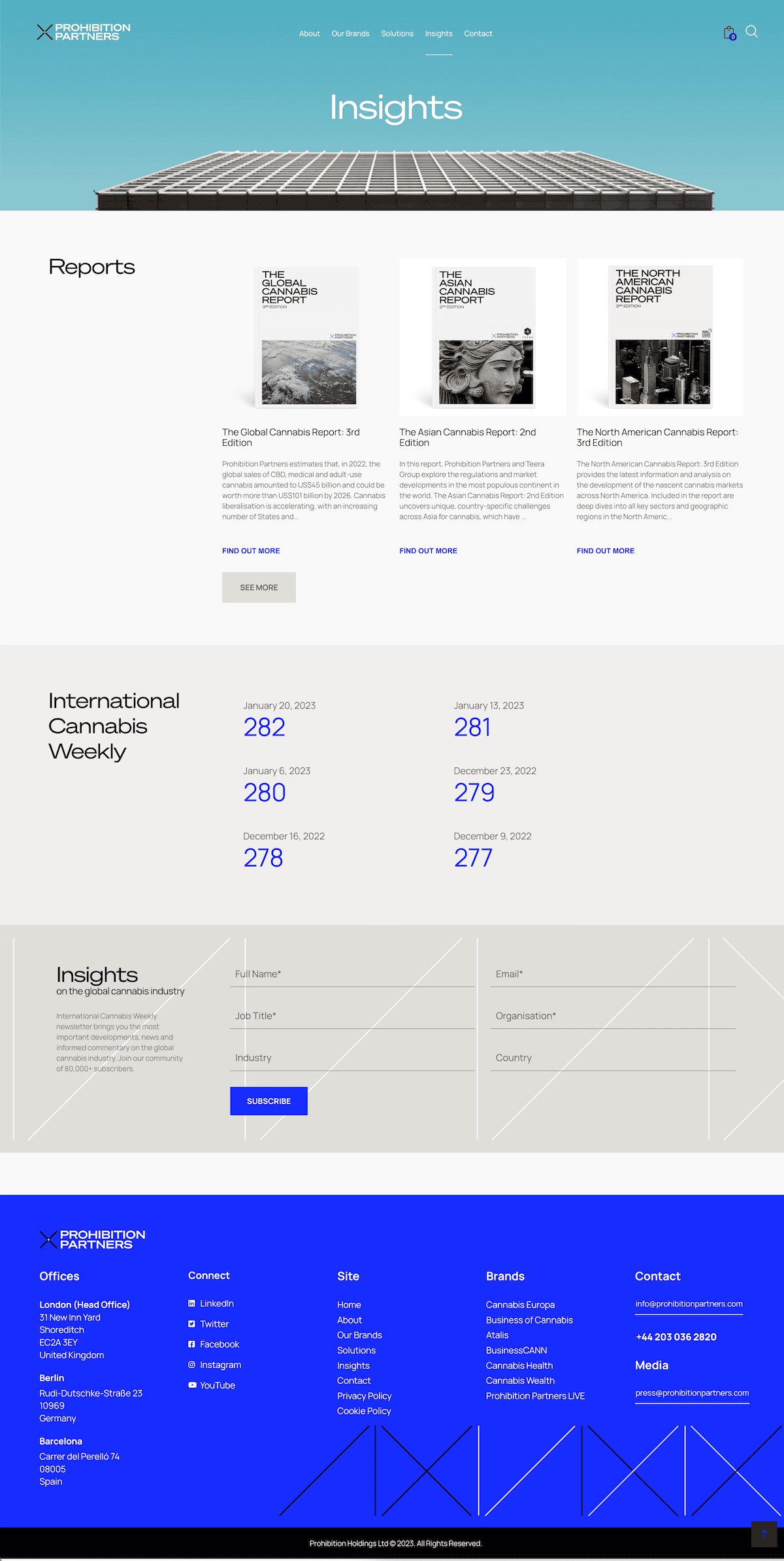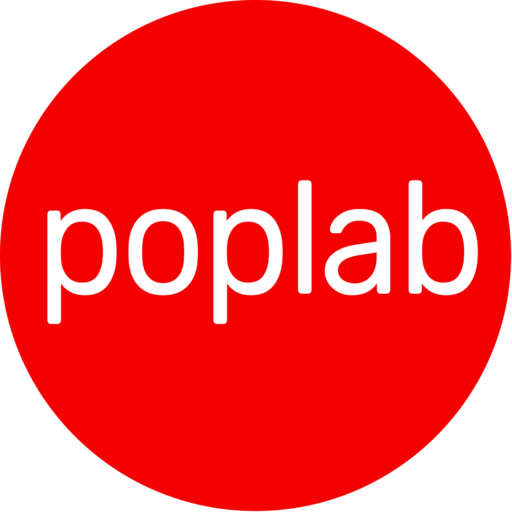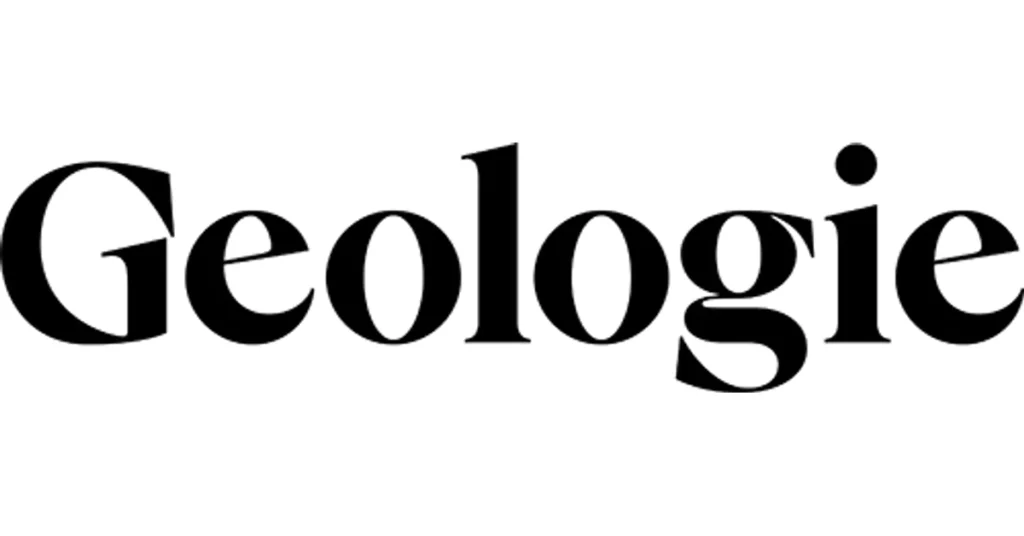Contesto
Prohibition Partners fornisce servizi di consulenza e soluzioni strategiche a investitori, operatori, grandi aziende e governi per aiutarli ad accedere al potenziale dell'industria della cannabis. Il progetto inizialmente mirava a consolidare le molteplici proprietà web del gruppo in un'unica entità e aggiornare il linguaggio visivo del sito web con un nuovo branding, che include i nuovi elementi del marchio.

Tuttavia, l'obiettivo si è poi spostato sul miglioramento della componente e-commerce B2B esistente e sulla riduzione dell'iniziativa di fusione multi-sito.

Sfida
Prohibition Partners, una sussidiaria di un gruppo B2B che include Cannabis Europa, Business of Cannabis, BusinessCann e Atalis, ha intrapreso un progetto per ottimizzare il suo portfolio digitale di marchi e prodotti. Il sito web di Prohibition Partners necessitava di una significativa revisione dei contenuti, del branding e di altre risorse, oltre a integrazioni strutturali con altre proprietà del gruppo nel rinnovato sito web di Prohibition Partners.

Approccio
La prima fase del progetto ha comportato un'analisi comparativa dei concorrenti, seguita da una valutazione dei contenuti del sito web. Queste due attività critiche hanno contribuito a definire la fase successiva della timeline del progetto. Attraverso una serie di rapide iterazioni, il team ha definito e approvato una sitemap consolidata di alto livello, e successivamente ha sviluppato una sitemap dettagliata. Sono stati poi creati i wireframe e completato un prototipo interattivo. Per guidare il team, sono state create delle mood board per comprendere le incongruenze nel linguaggio visivo tra le proprietà web e i prodotti del gruppo. Al termine di questo processo, il design visivo è stato sviluppato in Figma, e sono state create specifiche dettagliate in Zeplin per l'implementazione da parte del team di sviluppo.

Mio contributo
Come User Experience designer, il mio ruolo chiave nel progetto Prohibition Partners è stato quello di analizzare attentamente le proprietà web esistenti dell'azienda e combinare strategicamente contenuti e funzionalità importanti per costruire una nuova entità. Era importante farlo senza compromettere l'architettura del brand esistente e i pattern utente consolidati, migliorando allo stesso tempo l'esperienza utente complessiva. Questo processo ha richiesto cicli di prototipazione rapida e iterazione accuratamente orchestrati, nonché sessioni di feedback con stakeholder chiave di diverse organizzazioni. Poiché non c'era un ruolo dedicato di project management nelle prime fasi del progetto, è stato necessario uno sforzo aggiuntivo per stabilire flussi di lavoro ottimali e garantire un'implementazione efficiente.
Outcomes by the Numbers
27%
increase in qualified B2B leads captured through digital channels
39%
growth in website traffic from targeted cannabis industry segments
33%
higher conversion rate for report downloads and content access
42%
increase in traffic to thought leadership and market insights pages
24%
higher engagement with premium content and industry reports
58%
more newsletter and event sign-ups via the website
29%
growth in qualified inbound partnership inquiries
30%
greater completion rate of contact and partnership forms
Results achieved six months after go-live.
Cosa abbiamo imparato
Un insegnamento chiave da un progetto come questo è l'importanza di una preparazione approfondita per valutare correttamente il panorama dei contenuti attuali. Inoltre, condurre interviste approfondite con gli stakeholder è cruciale per minimizzare il rischio di tralasciare aspetti importanti del progetto. L'analisi dei dati può anche essere uno strumento prezioso per elaborare soluzioni, poiché anche piccoli dettagli che potrebbero non sembrare importanti a prima vista possono avere un impatto significativo. Infine, coinvolgere gli utenti nelle prime fasi del progetto è stato essenziale per ottenere preziose intuizioni sulla loro prospettiva.













